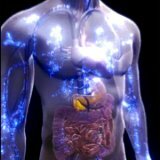Hyperglycemic conditions: signs and first aid

To dangerous conditions caused by hyperglycemia, include: diabetic ketoacidosis;Lactic acidosis;Hyperosmolar non-ketogenic hyperglycemia. The section "Hyperglycemic conditions: signs and first aid" is quite extensive, but includes unified points. These hyperglycemic conditions often occur together with each other. Because of this, a patient with diabetic ketoacidosis can suffer from lactic acidosis and then by analogy.
Symptomatic for all conditions is similar. The differences lie in measurable indicators. The first signs of a hyperglycemic condition can be nausea, loss of appetite and vomiting. Often the main complaint is aimed at pain in the abdominal region. Vision may be impaired, clouding of consciousness is not uncommon. There is a rare, noisy and deep breathing( hyperventilation).In the case of manifestation of dehydration, the diagnosis can be made according to these signs.
Diabetic ketoacidosis
The causes of diabetic ketoacidosis may be:
- belated diagnosis;
- unplanned lowering of insulin doses or omission of injections;
- is an infectious disease in acute form.
To avoid the development of diabetic ketoacidosis, the patient should be instructed and provided with instructions describing the behavior during the course of the disease.
The appearance of symptoms may be due to:
- disorders in the cerebral circulation;
- myocardial infarction;
- injury or surgery;
- emotional overload.
Since diabetic ketoacidosis is a critical condition, it is impossible to wait for the results of a laboratory examination to begin treatment. It is necessary to take immediate measures on the signs that are shown, and first aid should even combine close to clinical actions.
Regions stratum
One of the most important parts of the treatment of diabetic ketoacidosis is the replacement of intercellular and vascular fluids by the introduction of saline. The volume of the solution depends on the strength of the dehydration. Decrease in the level of HA occurs only as a consequence of rehydration and is able to indicate to some extent the sufficiency of the amount of saline.
Begin to enter from one liter per hour( for children in the calculation of 15 ml per kg).Clarifying the patient's condition, the further speed of administration is regulated. Diuresis, blood pressure and pulse should be taken into account. For elderly people with diseases of the cardiovascular system, it is more effective to insert a catheter into the central vein.
Rehydration may result in hypernatremia. It is necessary to apply a hypotonic sodium-chlorine solution with the stability of such a condition: the signs will manifest in the behavior of the patient.
After the level of HA drops to 15 mmol per liter, it is necessary to inject 5% glucose solution intravenously. For eight hours to enter no more than one liter.
Insulin
Based on the conditions, you need to inject insulin either intravenously, or intramuscularly every hour.
For intramuscular injections, the initial dose is 20 U of simple insulin, adding 5-10 U for each hour. Once the HA level reaches 15 mmol per liter, you should switch to subcutaneous administration every 4 hours. The dosage depends on the HA values.
With intravenous administration, 50 units of insulin and half a liter of saline are used. The rash should be administered at a rate of 50 ml per hour. If the HA drop is less than 10 percent per hour, then you should increase the speed. Further, after the fall of the HA, it is also necessary to switch to a subcutaneous injection within 4 hours.
Potassium
Potassium chlorine should be injected at a rate of about 2 grams per hour. It is necessary to monitor the pulse and arterial pressure, diuresis. Ingesting potassium is recommended for several more days.
Alkalis
Usually there is no need for sodium bicarbonate. Such therapy, as a rule, is used in cases of acidosis and hypokalemia. Indications for the introduction may be a drop in pressure and pronounced acidosis.
Other activities
It is necessary to treat simultaneously from hypoxia, infection and hypothermia. Consider the use of low doses of heparin with a doctor. In the case where abdominal symptoms do not go away within 4 hours, you should consult a surgeon. Often, patients who experience a coma, you should wash your stomach.
Lactatacidosis
Now, more about lactacidosis and measures in case of a condition. Like other hyperglycemic conditions, it can be caused by liver damage, including alcohol;Can be caused by shock and, unfortunately, most often will be a fatal complication. And first aid is often impossible to use. In the treatment of metformin( biguanides), there is some risk of lactic acidosis.
Causes of lactatacidosis-causing set:
- tissue hypoxia;
- pulmonary and congestive heart failure;
- blood loss;
- leukemia;
- various poisoning;
- septicemia.
With the pure form of lactic acidosis, the patient has metabolic acidosis, there is no ketonuria or minimal. It is also possible to develop this state together with other hyperglycemic conditions.
Lactatacidosis is indicated by an increase in the lactate plasma index of more than 7 moles per liter. The measurement is carried out only in laboratory, both directly and in the absence of anions.
Clinically, treatment will not differ from the treatment of diabetic ketoacidosis.
Hyperosmolar non-ketogenic hyperglycemia
Hyperosmolar non-ketogenic hyperglycaemia occurs in patients in the elderly who lack adequate care, and proceeds slowly.
Development is possible on the background of taking diuretics, dehydration, diseases of the vascular system of the kidneys and the brain.
The level of HA in this situation is greatly increased. Signs coincide with lactic acidosis. Treatment is also no different from treating any hyperglycemic condition. Only the dose of insulin can be lower than in other cases. And subsequent treatment may not suggest the introduction of insulin at all.



